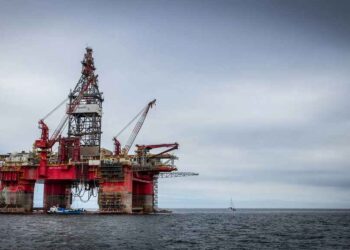Aldbrough gas storage facility is located 1.5km inland, near Aldbrough, in the East Riding area of Yorkshire, UK. Jointly developed by Statoil and Scottish and Southern Energy (SSE), the facility has a storage capacity of 370 million cubic metres of gas in nine underground caverns.
An investment of £290m is being made in the facility. SSE operates the facility through its subsidiary SSE Hornsea.
Operations at the facility commenced in July 2009 with three caverns. Another three caverns were storing gas by February 2012, when the official inauguration of the facility took place. The plant is expected to be fully operational by mid-2012.
The Aldbrough facility can deliver gas to the UK’s National Transmission System at the rate of 40 million m³/d, equal to the daily gas consumption of eight million homes. Gas can be injected into the facility at the rate of 30 million m³/d.
Construction and infrastructure of the Yorkshire-based complex
“An investment of £290m is being made in the facility. SSE operates the facility through its subsidiary SSE Hornsea.”
The facility was originally planned to be developed by British Gas and Intergen in 1997. British Gas planned to develop Aldbrough North as a gas storage facility while Intergen planned to develop Aldbrough South.
SSE and Statoil became owners of the two projects in 2002 and 2003. The two companies combined the projects in late 2003. Site work commenced in March 2004 and leaching of the first cavern started in March 2005.
The storage caverns were created by using directional drilling. From a central area of the site, boreholes were drilled down to the salt strata located 2km underground.
After completion of drilling, leaching was carried out by pumping seawater into the boreholes to dissolve salt and create a cavern. Natural gas was then pumped into the caverns and stored under high pressure.
Six of the nine caverns are already storing gas. As of February 2012, dewatering and preparation of the remaining three caverns is complete. Testing has been completed at two of these caverns.
The facility is operated remotely from SSE’s Hornsea storage facility. It includes an above ground gas processing plant equipped with three 20MW compressors. The gas caverns of the facility are connected to the UK’s gas transmission network through an 8km pipeline.
Extension of the Aldbrough facility
In September 2006, Statoil and SSE sought permission from the East Riding of Yorkshire Council to expand the facility to include another nine caverns. Approval to expand the facility was granted in May 2007.
The extension will increase the total number of caverns in the facility to 18, with a total capacity of 800 million m³/d. Completion of the extension will enable the facility to store gas equal to the daily gas consumption of 13 million homes.
In 2011, the partners decided to defer the development of the extension until the UK develops a policy on gas security.
The low premium, generated by gas sold in the winter season, was another reason for putting the extension plan on hold.
Technology and contractors involved with the gas storage facility
LogicaCMG supplied its Prodis system to operate the facility. Prodis helps in managing the gas capacity of the facility and also calculates the cost associated with the amount of gas withdrawn.
“In September 2006, Statoil and SSE sought permission from the East Riding of Yorkshire Council to expand the facility.”
Jacobs Engineering Group provided design and construction management services for six of the gas caverns. Scope of work included subsurface drilling and leaching of caverns, installation of an above ground gas processing plant and laying of the 8km pipeline. Jacobs was also contracted to provide pre-engineering services for the extension project of the facility.
AMEC was awarded a £53m contract to design, construct and install the gas processing plant. Abeko provided its Abeko Server I vessel for carrying out dredging activities for installation of pipelines.
Ability Drilling was awarded a £12.1m contract to drill the salt caverns. Petroleum Safety Services is providing drilling and workover safety services. Three variable-speed drive systems were supplied by Siemens under a £5.6m contract.
Spectrum Acoustic Consultants provided detailed noise modelling services for the project. Damor Engineering was responsible for engineering and design of the offshore seawater intake platform. HVAC systems were supplied by Industrial Air Control.

















































